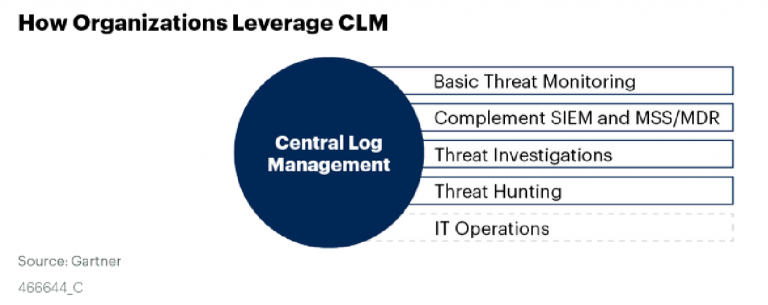…”. Briefly, to the point.
In fact, this famous book by Rob Fitzpatrick is called Ask Mom: How to Talk to Clients and Validate Your Business Idea When Everyone Else Is Lying. And it's about asking people questions to get truthful and useful information.
I want to tell you what's under the cover of the book, why I liked it, and why you might like it.

Here's what Alpina Publishing says about Rob Fitzpatrick:
Businessman, partner at Founder Centric, where he helps EU accelerators, universities and companies develop and implement more effective startup training programs.
A YCombinator alumnus, he successfully bankrupted three companies and created products that are used around the world by giants like MTV and Sony.
Works at University College London.
Why “Ask Mom”? At the beginning of the book, the author says that if a budding entrepreneur says, “Mom, I came up with this business idea. Do you think anyone needs it?”, Mom will most likely try to encourage him and say something like, “Yes, of course! You have a great idea. You can do it!” – even if she doesn't think so at all. And the goal of the book is to teach the reader how to conduct a conversation and ask questions in such a way as to get the most useful information even from such a biased interlocutor as one's own mother.
The book is small – about 150 pages with a table of contents, introduction, acknowledgements, and even a cheat sheet with basic information at the end. So here I will tell you very briefly what is in this book and why it will be useful to read it. For each of the theses that I will give, Rob Fitzpatrick gives examples from his personal experience – successes, and more often, the bumps and bruises that led him to such conclusions.
Yes, of course, this book is not only for startuppers. It is suitable for those people whose work involves receiving useful information from people and then using it. For example, for various analysts, marketers and… think of it yourself. I hope to use the knowledge I gained in my work as a systems analyst.
Okay, let's go.
Right at the start, Rob talks about how the wrong conversation with a client is not only unhelpful, but also harmful: because it confirms false ideas and can lead you down the wrong path. Using the example of a conversation between a hypothetical person thinking about an idea for an app and his mother, the author formulates “Test for Mom”.
Here's what this approach includes:
You need to talk about the life of your interlocutor, not about your idea
Ask about specific situations that actually happened, not about opinions and assumptions
Talk less, listen more
In the book, Rob Fitzpatrick breaks down several conversations from the perspective of the Mom Test and comments on which questions are good and where the conversation has gone astray. It's worth reading.
“What we end up with is that you shouldn't tell them what their problem is, and they shouldn't tell you what to do. They have the problem, you have the solution.”
In the second chapter, the author draws attention to the fact that in a conversation with interlocutors, one can also receive harmful, misleading information – compliments, general phrases, hypothetical reasoning, promises that are not supported by anything, ideas… All this is dangerous because an inexperienced person can take meaningless words as a guide to action. And of course, this wastes time and distracts from the essence of the conversation. Recommendation: politely avoid compliments, restrain chatter, formulate questions correctly, and correct the conversation with the help of the “Mom Test”. And again, many examples!
Things that are truly important for business, unlike compliments and promises to definitely buy a future product, can sound very unpleasant. Fitzpatrick says that you shouldn’t be afraid of bad news, you should use it. And even deliberately ask questions, the answers to which can destroy all your neat hypotheses. Indifference from clients is also a good sign: perhaps in the future it will help you avoid significant waste of time, money and effort on useless work.
“There is nothing worse than ignoring negative information and looking for the slightest confirmation of your rightness, which you can rely on. You need the truth, not a gold medal!”
To get the maximum result from a conversation with clients (partners, other respondents), the author advises formulating in advance “big three” questions – these are the questions that are most important to answer in this conversation.
He also gives advice avoid formalism. This means that it is not necessary to receive information only within the framework of a scheduled conversation at an appointed time in the office. An informal short conversation over a cup of coffee or a phone call can be no less useful.
Chapter 5 is about commitment. Fitzpatrick says that unsubstantiated approval, the words “I would buy that” or “be sure to let me know when you finish the development” – mean nothing. He tells how to distinguish those clients who are really ready to cooperate, from those who are simply polite and pleasant people. An important thesis: productive meeting – this is the one that ended with commitments (from signing documents to meeting decision makers).
Where to find the right interlocutors? There is a whole chapter dedicated to this. In short, anywhere. At industry events, online, organizing your own training, through friends and special consultants… To understand where exactly it is best to look for your, for example, clients, you need to carefully segment the audience you are interested in – there is a separate chapter about segmentation!
How to talk to important people? Fitzpatrick suggests using five key elements. Tell about the problem you are facing and the questions you are looking for answers to, and show the other person how important he and his help are to you. In short, this sequence looks like this: Vision / Formation / Weaknesses / Significance / Request.
How many meetings with each of the interlocutors are necessary? The author formulates the rule: “Continue talking until while you hear something new“.
What to do with the information received? Firstly, the author, based on his own bitter experience, advises not to go to meetings alone. This way, one of you will be able to carefully record all the main points, return the conversation to the right track if the other interlocutors are distracted. And this way, the director's head will not become a “bottleneck” and the information can be assessed more objectively. You need to prepare for the conversation – at least, study the topic, the interlocutor, and prepare three main questions.
“The golden rule: If you don't know what you want to know, don't even start the conversation.”
The results of the conversation should be discussed with the team – and not only the answers received should be analyzed, but also the course of the conversation itself: which questions were useful, which could have been left unasked, what else could have been learned?
This is the conclusion of the book. After some advice on how to keep notes, the author sums up what has been said in an encouraging way.
Communication with clients is a tool, not an obligation. If it does not help you in any way, or you avoid communication for any possible reason, skip this step.
So:
Before we start talking:
choose a clear customer segment whose representatives you can find
Together with your team, formulate three main goals for collecting information
if possible, think through the ideal scenario of the next steps and commitments think about who exactly you should talk to
try to guess what your future interlocutors care about most
If the questions you want to ask can be answered by “desk research”, do that research first.
During the conversation:
clearly formulate the topic
avoid formalism
ask the right questions that will pass the “Mom Test”
avoid compliments, hold back chatter, get to the bottom of things
take notes
If possible, seek firm commitments and record the next steps
After the conversation ends:
Review the recordings and key messages from the client with your team.
if necessary, transfer records to the information system
make adjustments to your assumptions and plans
Think through the next “big three” questions
“Mistakes are inevitable. And that's okay. Analyze the situation with your team and don't be too hard on yourself (or other founders). Learn to work together more effectively…<> You'll never be perfect, but there's always a point in improving yourself.”
I liked this book, it is easy to read, and despite the fact that it can be summarized in such a short form, there is little water inside. There are examples – from life, the author's biography, hypothetical dialogues, which he analyzes in detail. There are lists of criteria, there are questions for analysis, so that the reader can figure out what kind of communication with clients, experts and other stakeholders is needed in his particular case, and how to build it correctly.
A useful book, I recommend reading it in full!





